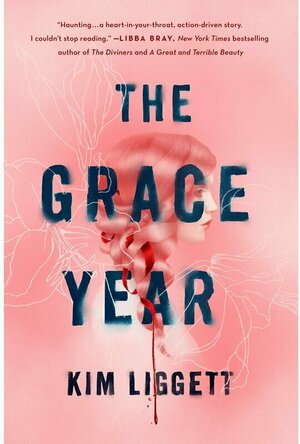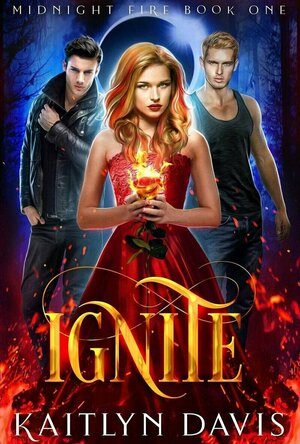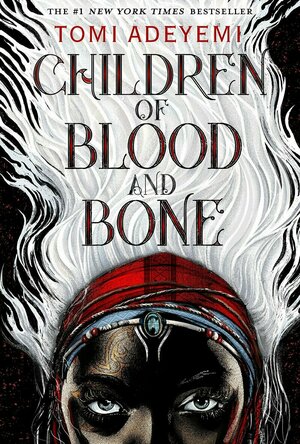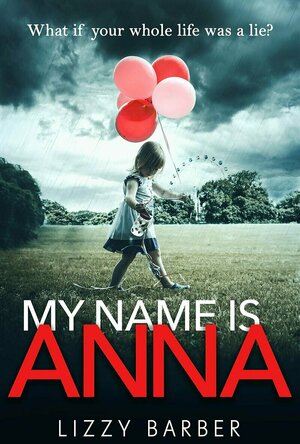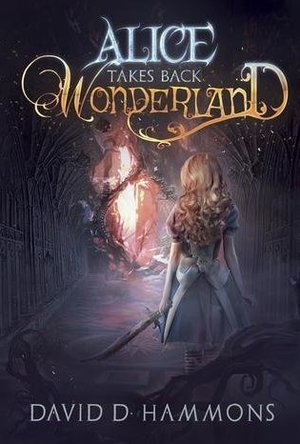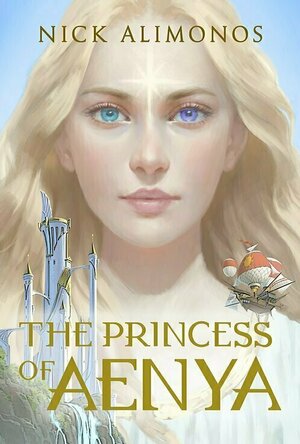Kristy H (1252 KP) rated The Grace Year in Books
Sep 26, 2019
"No one speaks of the grace year. It's forbidden."
I really liked the premise of this book. I'm sure you've heard all the comparisons by now. This is "The Handmaid's Tale" plus "Lord of the Flies." Throw a little "Hunger Games" in. Sold, right? The idea that society sends girls away at sixteen to rid themselves of their "magic"--it sounds really cool. A society that fears women and takes away their status, yet relies on their parts (literally) as medicine. Yes. So much of this book is really amazing. I highlighted so many powerful lines.
But, I don't know, guys... I am still wrapping my brain around this one. I just couldn't get into it. I never wanted to pick it up--I should have cared deeply for Trinity, and I did. Sometimes. Part of the reason I had problems going back to the book was because it stressed me out. These girls were mean. Sometimes I was confused. We were thrown into the story without any backstory--what time period, why they think women have magic, why medicine consists of body parts, who are the poachers, what are the outskirts, why is the original language flowers, etc. I guess that adds to the mystique, but I don't like reading when I can't figure anything out.
"But not all of us will make it home... not in one piece."
It seemed like this was going to be a power anthem. The girls rise against society. Or maybe just Trinity escapes and the outskirts rise against society. Someone should be revolting, right? And yes, Trinity definitely had her awesome moments. But it also seemed like there were lots of moments that involved rescue--by men. There's also a really convenient insta-romance in here. Everything just seemed a little jumbled and crazy for my taste. There's some amazing, underlining worthy lines and then some that just make you cringe a bit.
So, overall, I'm not totally sold, though there's potential here. I rate based on my enjoyment, so this is a 3-star read for me. But it's getting lots of rave reviews from others, so don't let my review necessarily hold you back.
Ivana A. | Diary of Difference (1171 KP) rated Ignite (Midnight Fire, #1) in Books
Oct 2, 2020
When Kira Dawson moves to South Carolina, she meets Luke, a blond goofball who quickly becomes her best friend, and Tristan, a mysterious bad boy who sends shivers down her spine. Kira knows they're keeping secrets, but when she discovers Tristan's lust for blood and her own dormant mystical powers, Kira is forced to fight for her life and make the heart-breaking decision between the familiar comfort of friendship and the fiery passion of love.
Ignite was another book from Tea's Wishlist challenge. I did enjoy this book, even though I found it slow at first. We have a familiar setting of a girl that moves to a new place, makes friends and enemies right away, and discovers secrets. And, it turns out the boy she loves is a vampire.
The first though I have in the first chapters, and I believe you did too, was - Twilight much? But, no. Once you get to read further into the book, you realise that Kira is nothing like Bella. And Tristan is nothing like Edward either...
This book is so different, and somewhat refreshing from all vampire books I have read so far. It isn't even a book about vampires. It's a book about this girl that can mirror the sun's light and heat from her hands, and is able to hurt only vampires. With her friend, Luke, Kira will discover that she has this ability, and so much more, she will discover secrets about her past that will change her life forever, and she will have to choose between her best friend or the love of her life.
I thought that this book might have used more action, as I felt a bit bored, especially at the beginning, and sometimes during some parts of the book.
I loved Kira's character - she is the typical girl that moves and tries her best to fit in.
I loved Tristan - he proves that you shouldn't judge a book by its cover, and sometimes people aren't what everyone thinks they are, and your environment doesn't define you as a person.
I didn't like Luke - I know he was there with a mission to tell Kira her secrets and protect her - but what friend would make you feel guilty about every single choice you have to make in your life. He is like, the very attached and overprotective boyfriend, that isn't her boyfriend.
Overall, it was a great refreshing read, and I look forward to reading the rest of the series. If you love vampire high-school stories, women that discover they have powers, a lot of forbidden love and paranormal fantasy - you will really enjoy this book. Solid 4 stars from me!

Ski Safari: Adventure Time
Games and Entertainment
App
Adventure Time meets Ski Safari! Shred the slopes of Ooo with Finn or BMO in this endlessly fun...
Goddess in the Stacks (553 KP) rated Children of Blood and Bone: Book 1 in Books
Feb 18, 2018
That massive frustration aside, I LOVED THIS BOOK. African-inspired fantasy novels are starting to crop up, along with other non-European based fantasy, and I'm loving it. (You can find Russian inspired fantasy that I've read previously here and here, and Jewish/Arab fantasy here.) Adeyemi is a Nigerian-American author, and this is her debut novel. It definitely shows some hallmarks of a debut novel - the dialogue is a bit stilted in places, and it's a little bit formulaic - but the world building is excellent.
Children of Blood and Bone is a story of oppression, and the sparks of a rebellion. I assume the rest of the trilogy will deal with the actual rebellion, but given the cliffhanger it ends on, I'm not actually sure of that. When Zélie, the main character, was very young, magic failed, and the king, who was afraid of maji, took the opportunity to kill every maji in his kingdom before they could find a way to regain their powers. Since then, every person who could have become a maji as they grew (they're marked by their white hair) has been treated as a second-class citizen. They're forced into slums, used as slave labor, kicked around by nobility and guards, made to pay higher taxes, and forbidden to breed with the other classes. They don't have magic - and they have no way to get it - but they're treated as trash by the king that hates them, and accordingly by the rest of his subjects.
At the beginning of the book, a magical artifact resurfaces that restores magic to any diviner (potential maji) that touches it. This, of course, is not okay with the king, and most of the book is about the race to use the magical artifact while being chased by the king's son and his guards who are trying to destroy it. The conflicted prince has secrets of his own, though, and as the book weaves through jungles, mountains, and seas, he wavers in his mission.
It's always difficult to review books without giving too much away about the plot, so I won't say much more about the events. I really enjoyed that they rode giant cats - leopanaires. Zélie and her allies ride a lion leopanaire, which is apparently somewhat unusual. Most of the guards ride leopards or cheetahs, while the royal family rides snow leopanaires. The magic is unique, the gods and religion are beautifully fleshed out, and overall I just really loved this world, and I'm very sad it will be so long before I can dive back into it.
You can find all my reviews at http://goddessinthestacks.wordpress.com
Ivana A. | Diary of Difference (1171 KP) rated My Name Is Anna in Books
Nov 9, 2018
How far will they go to lay the past to rest?
My name is Anna is one of those books that captures your attention from the moment you look at its cover. Then, it drags you into a story, makes you bite your nails throughout, lifts you up in the air with the amazing writing and than smashes you back into the ground with the incredible twist at the end. Exactly what you want and need from a thriller.
The story is being told by two girls:
Anna, a girl raised with a religious mother, where everything is forbidden and everything is a sin. And when on her 18th Birthday, Anna decides to disobey her mum and go to a theme park, she feels like she has been here before. And then random events lead to her realising that she was taken away when she was a little girl. And her real name is not Anna at all…
Rosie, a girl whose big sister has been missing for fifteen years. And when the media is ready to let the story go after the fifteen years anniversary, Rosie is determined to do whatever it takes to discover the truth of what actually happened on that day at the theme park.
The first thing I noticed in this book, that makes it different than all the stories about the kidnapping is – that the plot is being revealed in the first chapters. I was not expecting to immediately know that Anna and Rosie are sisters and Anna was kidnapped as a girl, but this was stated in the first chapters in the book. I personally thought that this would be the big twist, but the twist came to be so much better than that.
I loved how you could relate to both girls, for different reasons, and how even though they were sisters, how one little moment changed their lives completely. How Anna was raised with different beliefs than Rosie, and how they grew up to be so different, but the same…
This was a great story that give you thoughts about ‘’what could’ve been…’’ and it makes you wonder – if certain things didn’t happen, would our lives be the same?
The end for me, was particularly meaningful. The last moments, the realisation, the conclusion, the story that ended, or the one that never begun, all the things we could’ve been, but are not, and all the things that we wish we could have changed, but we can’t.
If you, like me, are into kidnapping stories, amazing twists and thriller stories that take your breath away, this will definitely be the perfect book for you. This will be a hit at the beginning of 2019, and it will hit the top shelves. I know it hits my favourite shelf – for sure!
A huge thanks to Penguin Random House UK, for providing me with a hardback copy, in exchange for an honest review of this book. The opinions in this review are entirely my own, and completely unbiased.
Hazel (1853 KP) rated Alice Takes Back Wonderland in Books
Dec 14, 2018
When a book starts with “‘Do you know fairy tales are real’ asked the cat,” you know you are in for a magical ride. Nearly everyone knows the tale of the seven-year-old girl from nineteenth century London who falls down a rabbit hole and spends a day of madness in the magical world of Wonderland. In David D. Hammons version, however, Alice was a young girl from twenty-first century Missouri. On her return to the real world she was diagnosed with ADHD and Schizophrenia and forced to believe that the Cheshire Cat and the Mad Hatter were figments of her imagination. But ten years later a white rabbit appears and leads Alice back to the world where nothing makes sense.
All is not well in Wonderland. The Cheshire Cat is dead and the Ace of Spades is in charge. Barely anything is the way Alice remembers. Everything looks far too “normal” and similar to the world she comes from. Ace is determined to remove the wonder from Wonderland and create a place where madness is forbidden. Alice has a big fight on her hands as she tries to end this former playing card’s tyrannous reign and restore Wonderland back to its original insanity.
<i>Alice Takes Back Wonderland</i> is not purely a retelling of Lewis Carrols famous story. Although many of the well known and loved characters appear in this book, so do others from a variety of different fairytales: <i>Peter Pan, Pinocchio</i>, and various tales from the <i>Brothers Grimm</i>. As readers will discover, all is not exactly as it should be for these characters either. Despite them being contrasting, magical stories, Hammons has successfully merged them all together in an imaginative manner resulting in a humorous young adult novel.
Although mostly focused on the goings on in Wonderland and the other fictional locations, it is also a subtle metaphor to describe what Alice’s life had been like back in present day America. For a decade Alice was forced to take medication to help her understand the difference between reality and fantasy. It got rid of most of the nonsense thoughts she picked up during her first visit to Wonderland. In a way, that is what the Ace of Spades is doing to characters he believes are mad. He is taking the wonder out of them, just like the pills to the wonder out of Alice.
Lovers of fairytales will definitely love this book, especially those who grew up loving <i>Alice in Wonderland</i> and <i>Peter Pan</i>. In some ways it is a continuation of the original tale, yet in other ways it could be viewed as an alternative way the story could have gone. Primarily targeted at young adults, <i>Alice Takes Back Wonderland</i> is much darker than Carrols version and combines a mix of real life with fantasy. It also goes to show that no one is too old for fairytales!

Cosmic Cabaret
Rosalie Redd, Jayne Fury, C.J. Cade, Kat Vancil, Blaire Edens, Diana Rivis, Tessa McFionn, Dena Garson, Selene Grace Silver, Cailin Briste, Athena Grayson , Jenna Lincoln and Kerry Adrienne
Book
Where Hearts Collide in the Greatest Show in Space Join us aboard Blue Star Line’s crown jewel,...
Science_Fiction Romance Anthology
Kara Skinner (332 KP) rated The Princess of Aenya in Books
Jul 20, 2020
My rating: 4 out of 5 stars
Princess Radia is struggling to rule Aenya, a once-mighty kingdom now all but cut off from the rest of the world. But her adopted brother, Zaibos, leader of Aenya’s army, rebels against her until she’s forced to go into hiding while he rules as a sadistic tyrant. Now Radia and her bodyguard Demacharon have to hide until they can take back Tyrnael. But Radia isn’t all that she seems. She might possess power greater than anything she or her allies imagined.
The Princess of Aenya by Nick Alimonos was a good book, but I think I would enjoy it more reading it a second time. From the beginning, there’s an onslaught of action and story coming from multiple characters at once. The main storyline follows Radia and Demacharon as they fight to survive. But Hugo and Esse, a soldier and a servant, are introduced, as well as Ugh, a Bogren, and Eros, an assassin hired to kill Radia.
Through alternating chapters, the reader has to follow all of these storylines before they eventually intertwine in the end of the book and, for me at least, this was difficult. Don’t get me wrong, I still enjoyed the individual storylines and characters.
Hugo and Esse deserve their own book. I would love for a companion novel to be made about them leading the rebellion in Tyrnael while Radia had to be in hiding. Esse was bred to be a servant, someone designed to not stand out or aspire to anything more than serving others. But she fought against that lifelong training to lead a rebellion against a sadistic tyrant. Before Zaibos, Tyrnael was at peace for a thousand years. No one had any experience protesting or rebelling because there wasn’t a need. But Esse stepped up and started to lead! Honestly, her story is just as fascinating as Radia’s, and a lot more relatable. I love stories about people who take their fate into their own hands so Esse’s story would be a great one.
I really liked Eros as well. He represents the dark side of Tyrnael. Just because there was peace doesn’t mean everyone was happy. Sexual intercourse is forbidden in Tyrnael. Eros was born from sexual intercourse so he and his mother were branded and ostracized. He was forced to become an assassin to support and protect his mother. Honestly, I wanted him to fail and succeed at the same time because succeeding meant killing Radia but it also meant the brand getting lifted from his mother.
However, while I enjoyed the characters and could follow and enjoy the plot overall, there’s still a lot I’m confused about. There are five storylines to juggle, six if you count Demarchon’s flashbacks. Not only are we following Radia, but we are also following Eros, Ugh, Esse, and Zaibos through their stories. It’s a lot to take in and keep straight.
The Princess of Aenya was an enjoyable read and the ending was satisfying. However, I would get a lot more out of the story if I reread it.
Get The Princess of Aenya on Amazon.

POIViewer - Manage your POIs
Navigation and Productivity
App
POIViewer is a POI management tool with a lot of features. POIViewer can load, manage and display...
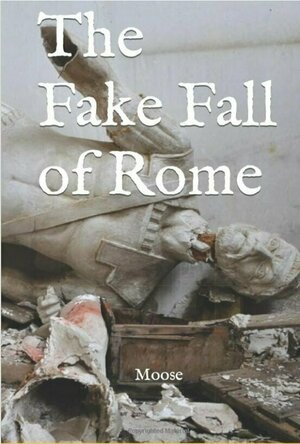
The Fake Fall of Rome
Book
This text contains material that you cannot unread. Your thinking process will be permanently...
history
